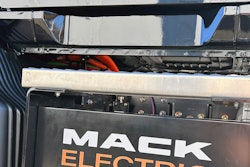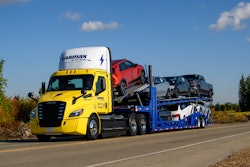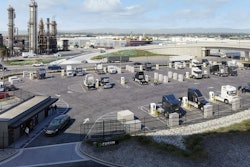Correlation does not imply causation. It’s sage advice. In simpler terms, just because this cup of coffee tastes bad, doesn’t necessarily mean the coffee beans were bad. There likely is more to the story.
Headlines have abounded this quarter on how the race to electrify cars and trucks is slowing. It doesn’t seem to matter that the numbers don’t support that. What matters, apparently, is that some manufacturers of these vehicles are slowing production and sales.
Over a quarter century ago, long and tall semis were the bulk of production at a manufacturer. The senior management determined that the future was aerodynamic and proceeded to walk the talk and invest in newer more aerodynamic truck models.
That first decade of transition was hard on dealers and fleets used to buying traditional trucks. Dealers often got quite a premium when selling the traditional trucks versus aerodynamic ones, so the starting point was a financial one for dealers. There were also fewer opportunities to customize the aerodynamic tractors — less bling and less polished metal aftermarket accessories. Those iconic aftermarket sales opportunities like external air cleaners, vertical exhausts, headlamp pods, roof mounted horns, and more all became irrelevant on aerodynamic tractors. Even simple things like one-piece aerodynamic windshields represented a threat to income in the repair market that was used to profiting off of replacing two-piece flat glass windscreens.
Manufacturers make trucks in the U.S., but dealer’s sell them. It’s a challenge when both are not on the same page. It didn’t seem to matter to dealers that manufacturers saw that the higher volume sales were going to be aerodynamic tractors, or that the distant future would have regulations mandating that manufacturers devote an increasing share of production to aerodynamic trucks.
The increasing price of fuel eventually convinced many fleets to demand increasingly better fuel economy. Aerodynamics was one of the few things that could accomplish it.
Manufacturers make trucks, dealers sell trucks, but fleets ultimately buy them.
I sat through more than a few meetings with dealers and fleet customers who long to keep the status quo decidedly non-aerodynamic traditional trucks dipped in chrome. But there were other fleets who were making more money and using less fuel by switching to aerodynamic trucks. When the market speaks, manufacturers and dealers both have to listen.
I expect there were a lot of job changes over the aerodynamification of fleets between 1995 and 2015, a 20-year period where OEMs engaged heavily in improving aerodynamics and ultimately produced tractors capable of exceeding 10 MPG in long haul applications.
I heard rumors that some dealers in the early days of aerodynamic tractors were reluctant to sell them and would only order them to appease manufacturers, keeping them on the back fence gathering dust. Their argument to fleets was that residual value of the traditional tractors was going to be much better for them. That argument didn’t have long legs as fuel prices spiked and less fuel-efficient tractors became more challenging to sell as programs like SmartWay were endorsed by fleets, and OEMs started to have build-mix requirements tied to emissions standards.
I feel like today the electrification of trucking is seeing some of the same challenges that aerodynamification did. I see some of the same symptoms — the technology blinders that favor selling and buying the status quo just because it’s easier, cheaper, more profitable, whatever.
If you want another period that saw these same transitional forces, got back to the 1940s and 1950s when diesel electric locomotives entirely replaced steam as a motive force in moving trains. That period is called dieselization. It only took 20 years for nearly every steam engine, and all the associated infrastructure supporting steam, to be entirely replaced by diesel-electric. Whole towns that had existed as coaling or water stops ceased to have purpose. Major steam train repair facilities had to replace steam pressure vessel welders with diesel mechanics and electrical engineers. During that period, staunch steam supporters continued to develop prototypes of advanced steam engines, even trying out steam turbines running off oil fed boilers. Today you have to go to a museum to find these vehicles or a few rare tourist sites to ride one.
Change is tough, no argument there. It both opens and closes doors. Electrification is just another in a long line of major technology shifts for freight. Whether talking about containerization, dieselization, aerodynamification, or electrification, the new technologies eventually win out because the market demands them. The market has early adopters and laggards. Look to the past to see where the laggards wound up in the competitive real-world marketplace.
Just because sales of a particular company’s offering are not meeting expectations, don’t assume that the movement toward that new technology has slowed. Your conclusions can only be tied to that one manufacturer and their distribution network. If you are an opponent of change, you certainly can find information to support your argument, but over the long run you may need to change your opinion.
Correlation does not imply causation.












